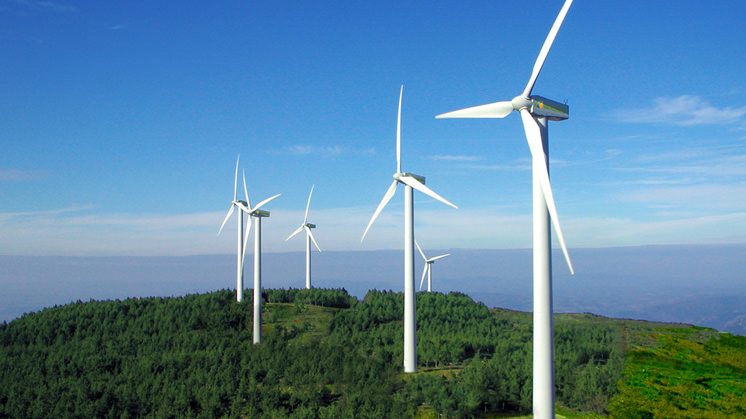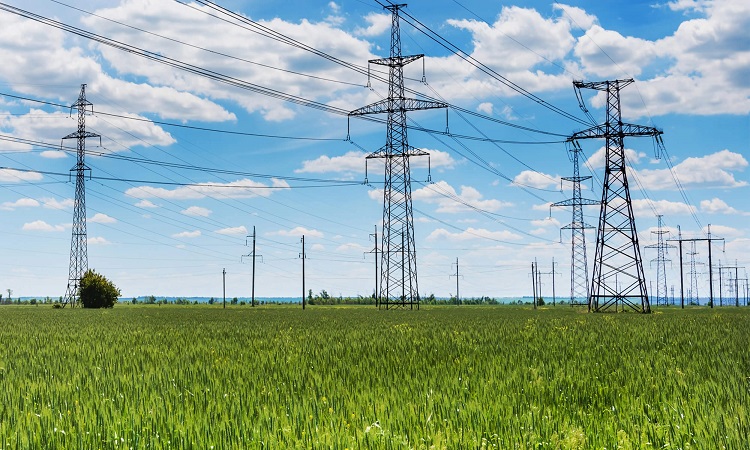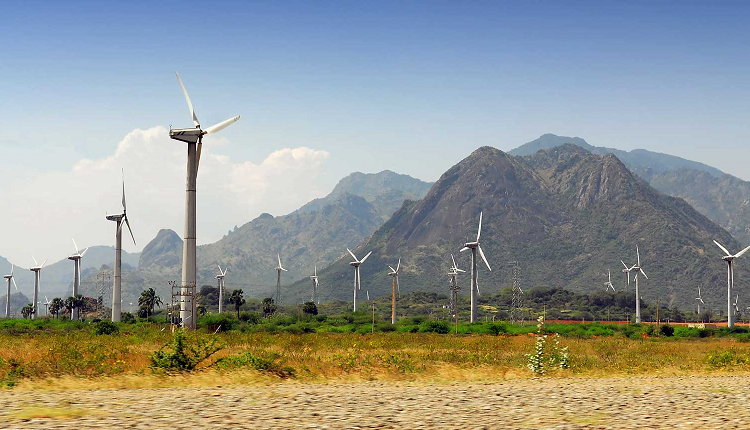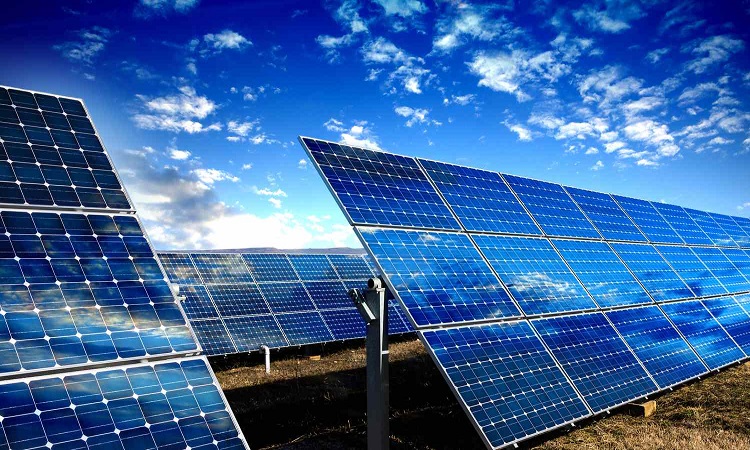Wind Turbine Rotor Blade Market: Offshore & Onshore Wind Projects to Lead Growth

Strong 8k brings an ultra-HD IPTV experience to your living room and your pocket.
The increasing number of offshore and onshore wind energy installations worldwide is expected to drive the global wind turbine rotor blade market during the forecast period from 2023 to 2028.
According to TechSci Research report, “Wind Turbine Rotor Blade Market – Global Industry Size, Share, Trends, Opportunity, and Forecast 2018-2028”, Global Wind Turbine Rotor Blade Market is anticipated to grow at a 7.26% CAGR in the forecast period, 2024-2028, The wind power industry has been in demand for cost-effective solutions, and a highly efficient product has the potential to change the dynamics of the industry. There were instances where old turbines were replaced, not because of the damage but due to the availability of more efficient blades in the market. Hence, technological developments present themselves as opportunities for the wind turbine rotor blade market.
Based on Location of Deployment, Global Wind Turbine Rotor Blade Market is segmented into two segments— On-shore and Off-shore, the market's largest contribution will be the onshore segment. The onshore wind energy power generation technology has evolved over the last five years to maximize electricity produced per megawatt capacity installed and to cover more sites with lower wind speeds. Besides this, in recent years, wind turbines have become larger with taller hub heights, broader diameters, and larger wind turbine blades. According to the Global Wind Energy Council (GWEC), the onshore wind market added 72.5 GW worldwide in 2021, 18% lower than in 2020, due to a slowdown in the growth of the onshore wind market in China and the United States, the world’s two largest wind markets.
However, in 2021, explosive growth was witnessed in Europe, Latin America, Africa, and the Middle East, where new onshore installations increased by 19%, 27%, and 120%. India is one of the fastest-growing wind power generators. According to India’s Ministry of New and Renewable Energy, as of 2021 the country had the fourth-highest installed wind energy capacity in the world, with a total installed capacity of 40.08 GW. The expansion of the wind industry has resulted in a robust ecosystem, project operation capabilities, and a manufacturing base of about 10,000 MW per annum in the country. China follows the same trend.
According to the National Energy Administration (NEA), 47.5 GW of wind capacity was grid-connected in 2021, and the total onshore installed wind capacity registered at 310.62 GW. Due to high investment and changes in government policy, the onshore segment is expected to lead the growth of the wind turbine rotor blade market in India and China. According to the GWEC, the United States' onshore wind sector reported the second-highest annual new installations in the world in 2021, with around 12.74 GW commissioned.
The onshore wind installation in the United States was driven primarily due to the planned Production Tax Credit phase-out as project developers had to meet their deadline, which also directly aids the onshore wind turbine rotor blade market. Further, according to Wind Europe, onshore wind energy will lead the market demand in the European region to achieve net-zero carbon emissions by 2030.
Browse over XX market data Figures spread through XX Pages and an in-depth TOC on "Global Wind Turbine Rotor Blade Market.”
https://www.techsciresearch.com/report/wind-turbine-rotor-blade-market/20142.html
According to GWEC, onshore wind energy capacity takes up around 90% of wind energy. Strict regulations to reduce carbon emissions and phase out conventional power systems are expected to drive the market. Therefore, based on the above-mentioned factors, the onshore wind turbine rotor blade segment is expected to grow due to declining LCOE and reduced CAPEX, coupled with high energy demand through clean sources, during the forecast period.
Based on Region, Asia Pacific region is expected to dominate the market for Wind Turbine Rotor Blade during the forecast period. Asia-Pacific is one of the largest regions in the global wind turbine rotor blade market. Most of the demand is generated from China, India, and Japan. Since the invention of the modern wind turbine generator (WTG) in 1891, China has recognized that wind energy technology offers an effective way to provide electricity to rural and isolated areas.
China's installed wind capacity grew from a mere 4 MW in 1990 to 338.30 GW in 2021 due to policy reforms, dedicated R&D initiatives, new financing mechanisms, and clear goals in the most recent Five-Year Plans. Both China's installed capacity and new capacity in 2021 were the largest in the world by a wide margin.
According to IRENA, China is expected to continue to dominate the onshore wind power industry, with more than 50% of global installations by 2050. Also, due to the high population, high electricity demand in the country is expected to promote growth in wind energy. Several multinational corporations, including Chinese firms, are investing in this sector with the help of federal and provincial governments across the country.
According to the National Energy Administration (NEA), China connected 47.5 GW of onshore wind capacity in 2021, boosting its total onshore installations to 310.62 GW. Further, the Chinese onshore wind market is expected to grow steadily in the coming years, with rising needs for key components and materials, not only for the national market but also for international exports. Besides, in China, nearly 70% of the electricity produced is from thermal energy sources.
As there is increasing pollution from thermal sources, the country has been focusing on increasing the share of cleaner and renewable sources in power generation. Furthermore, out of the total 21.10 GW of newly installed offshore capacity worldwide, 80% (16.90 GW) of the new installations came from China in 2021, and China's cumulative offshore wind capacity stood at 27.68 GW. All of this indicates that China is expected to be the largest market for wind turbine rotor blades market in the Asia-Pacific region.
Furthermore, India is trying to expand its green energy portfolio by harnessing the entirely unexploited offshore wind energy potential along its 7,600-kilometer coastline. The focus on offshore increased in recent years. The renewable energy ministry has set a target of 30 GW of offshore wind installations by 2030. Therefore, factors, such as upcoming wind power projects, along with supportive government policies and regulations in different countries across the region, are expected to increase the demand for wind turbine rotor blades in the Asia-Pacific during the forecast period.
Major companies operating in the Global Wind Turbine Rotor Blade market are:
TPI Composites Inc.
Lianyungang Zhongfu Lianzhong Composites Group Co. Ltd
LM Wind Power (a GE Renewable Energy business)
Nordex SE
Siemens Gamesa Renewable Energy, S.A.
Vestas Wind Systems A/S
MFG Wind
Sinoma wind power blade Co. Ltd
Aeris Energy
Suzlon Energy Limited
Download Free Sample Report
https://www.techsciresearch.com/sample-report.aspx?cid=20142
Customers can also request for 10% free customization on this report.
“The Global Wind Turbine Rotor Blade Market is expected to expand during the projected period. The global Wind Turbine Rotor Blade Market is driven by several key factors. Firstly, the increasing global wind energy capacity is a primary driver. Governments and organizations worldwide are investing heavily in wind energy as a clean, renewable source of power, leading to a growing demand for rotor blades. Advancements in wind turbine technology are another crucial driver.
Longer blades, improved materials, and enhanced designs lead to higher energy capture, improved efficiency, and reduced costs. Offshore wind energy expansion is also driving demand for specialized rotor blades, as offshore winds are stronger and more consistent. Environmental concerns and renewable energy goals, combined with cost reduction initiatives, are propelling the market.
Additionally, government incentives and policies support the development of wind energy projects. Technological innovation, supply chain expansions, and increasing investment in renewable energy are further bolstering the Wind Turbine Rotor Blade Market, making it a vital component of the global transition towards cleaner and more sustainable energy sources.” said Mr. Karan Chechi, Research Director with TechSci Research, a research-based global management consulting firm.
Wind Turbine Rotor Blade Market – Global Industry Size, Share, Trends, Opportunity, and Forecast Segmented By Location of Deployment (Onshore and Offshore), Blade Material (Carbon Fiber, Glass Fiber, and Other Blade Materials), By Region, Competition, 2018-2028”, has evaluated the future growth potential of global Wind Turbine Rotor Blade market and provides statistics & information on market size, structure, and future market growth. The report intends to provide cutting-edge market intelligence and help decision-makers take sound investment decisions. Besides, the report also identifies and analyzes the emerging trends along with essential drivers, challenges, and opportunities in the global Wind Turbine Rotor Blade market.
Contact
Techsci Research LLC
420 Lexington Avenue, Suite 300,
New York, United States- 10170
Tel: +1-332-258-6602
Email: [email protected]
Website: www.techsciresearch.com
Note: IndiBlogHub features both user-submitted and editorial content. We do not verify third-party contributions. Read our Disclaimer and Privacy Policyfor details.







